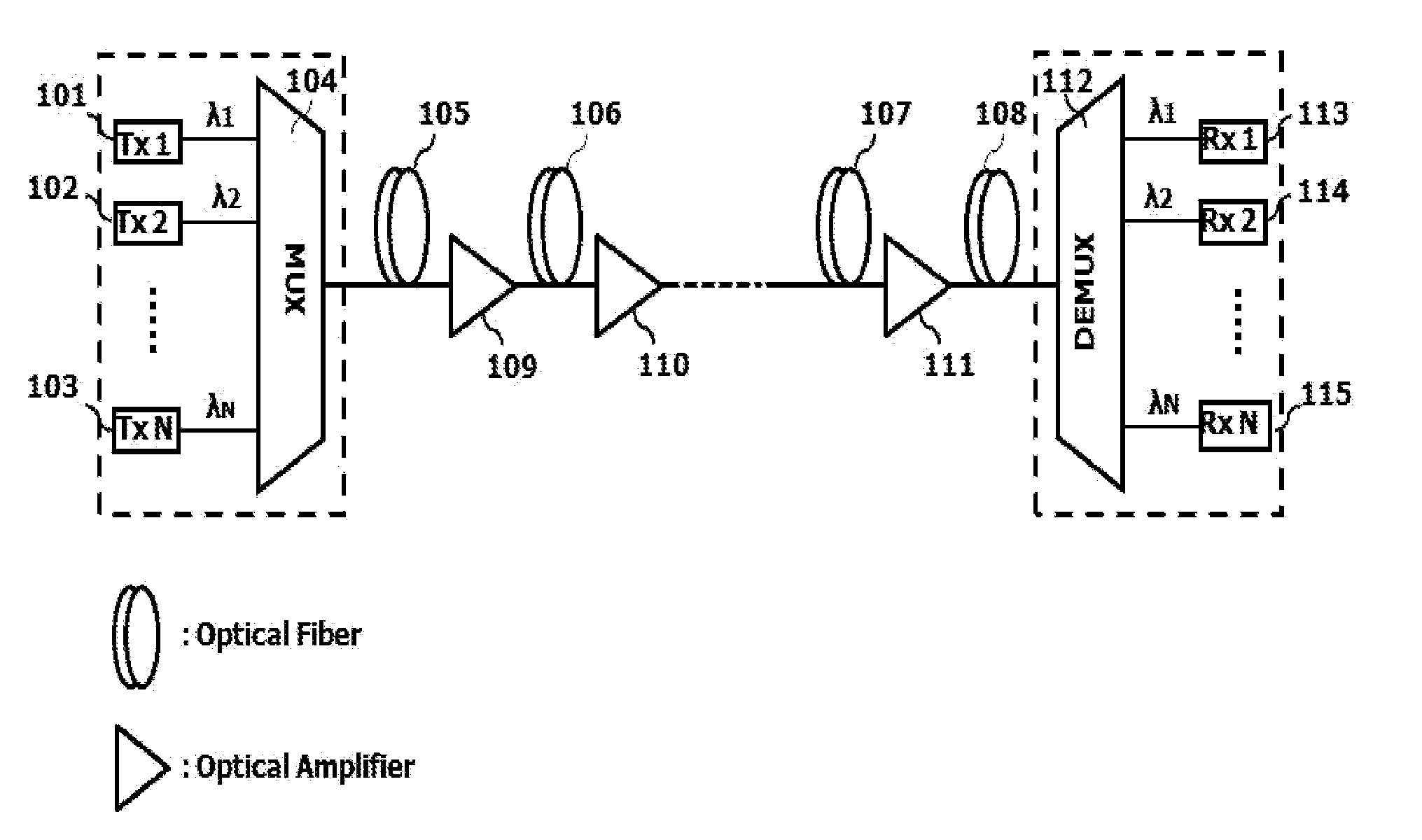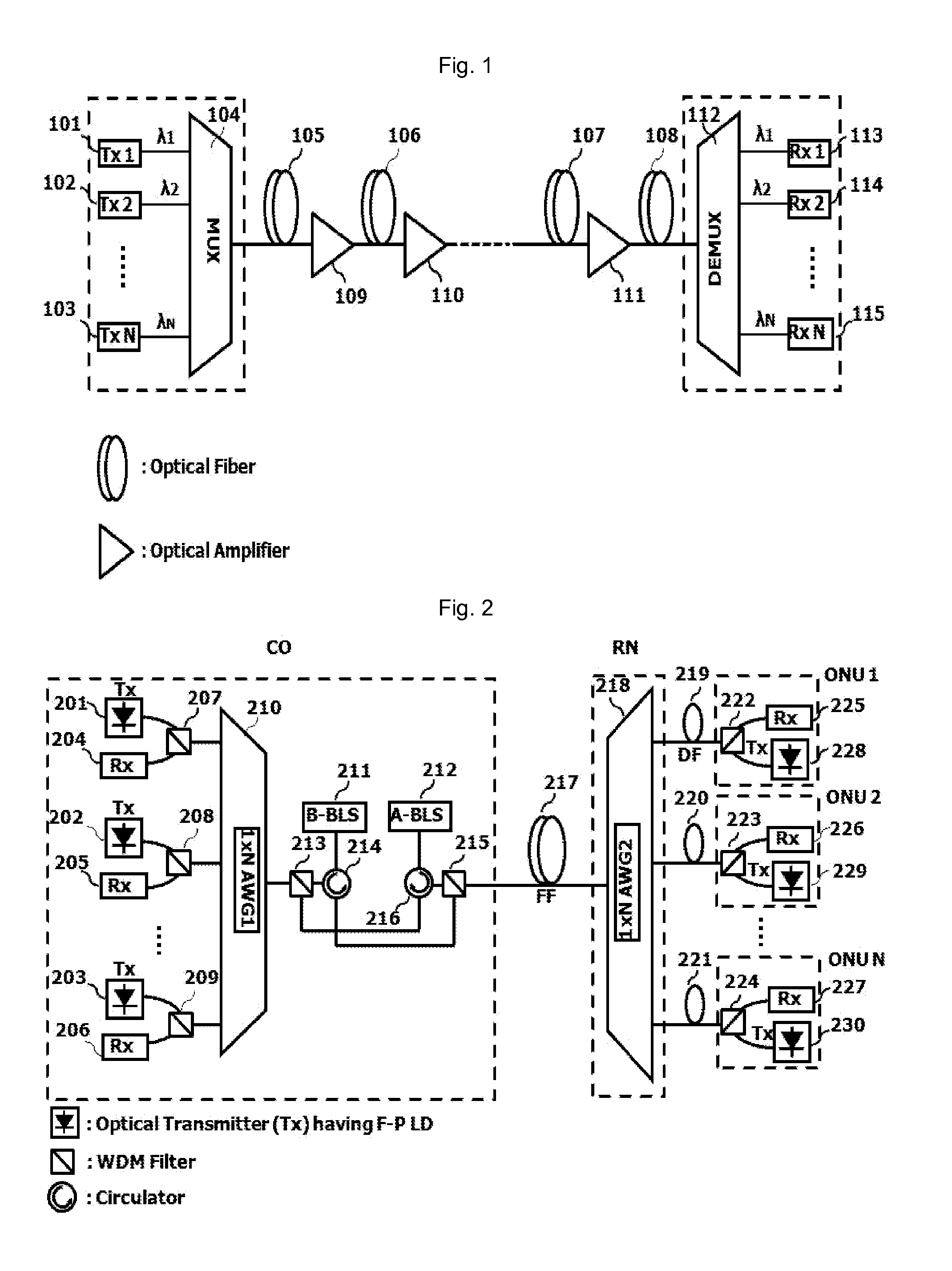Transmission device of a low-noise optical signal having a low-noise multi-wavelength light source, a transmission device of broadcast signals using a low-noise multi-wavelength light source, and an optical access network having the same
a transmission device and optical signal technology, applied in the direction of electromagnetic transmission, multi-band multiplexing, optical communication networks, etc., can solve the problems of low economic efficiency of wavelength division multiplexed optical communications network and optical access network, and does not have low-noise characteristic at other bands, etc., to enhance economic efficiency, enhance transmission characteristics, and improve the effect of efficiency
- Summary
- Abstract
- Description
- Claims
- Application Information
AI Technical Summary
Benefits of technology
Problems solved by technology
Method used
Image
Examples
first embodiment
[0039]FIG. 4 illustrates a schematic view of a transmission device of a low-noise optical signal where a plurality of selected beams has a low-noise, respectively, even in case of selecting respectively different wavelengths from a plurality of plurality of lights beams being lasing at a multi-wavelength, by using a plurality of low-noise multi-wavelength light sources (LMLS) according to the present invention.
[0040]FIG. 5 illustrates a view of a wavelength division multiplexed optical access network having a transmission device of a low-noise optical signal according to a first embodiment of the present invention as illustrated in FIG. 4.
second embodiment
[0041]FIG. 6 illustrates a schematic view for explaining a transmission device of a low-noise optical signal where a plurality of spectrum-divided lights has a low-noise, respectively, even in case of spectrum-dividing one light being lasing at a multi-wavelength, by using a low-noise multi-wavelength light source (LMLS) according to the present invention.
[0042]FIG. 7 illustrates a schematic view of a transmission device of a low-noise optical signal where output lights outputted from a low-noise multi-wavelength light source (LMLS) from an LMLS according to a third embodiment of the present invention are spectrum-divided, while a plurality of spectrum-divided output lights is injected into a specific light source, respectively, of a plurality of optical transmitters (Tx).
[0043]FIG. 8 illustrates a schematic view of an embodiment of a wavelength division multiplexed optical access network having a transmission device of a low-noise optical signal according to a third embodiment of t...
PUM
 Login to View More
Login to View More Abstract
Description
Claims
Application Information
 Login to View More
Login to View More - R&D
- Intellectual Property
- Life Sciences
- Materials
- Tech Scout
- Unparalleled Data Quality
- Higher Quality Content
- 60% Fewer Hallucinations
Browse by: Latest US Patents, China's latest patents, Technical Efficacy Thesaurus, Application Domain, Technology Topic, Popular Technical Reports.
© 2025 PatSnap. All rights reserved.Legal|Privacy policy|Modern Slavery Act Transparency Statement|Sitemap|About US| Contact US: help@patsnap.com



